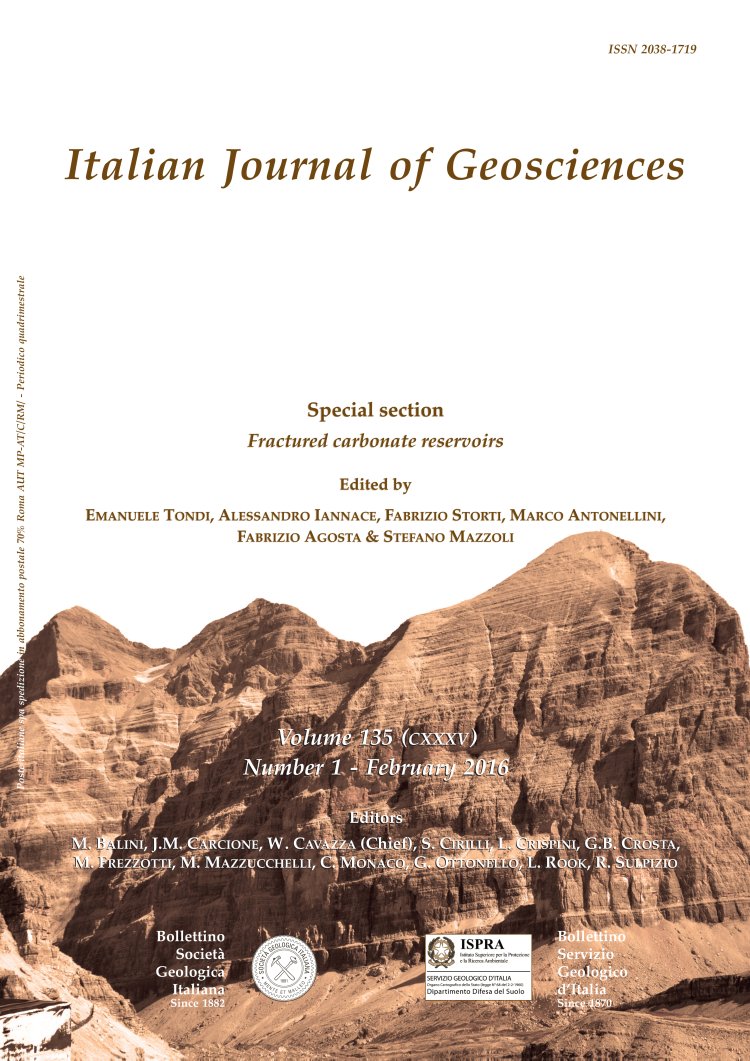
An overview on the characteristics of geothermal carbonate reservoirs in southern Tuscany
Andrea Brogi (1), Domenico Liotta (1), Giovanni Ruggieri (2), Enrico Capezzuoli (5), Marco Meccheri (3) & Andrea Dini (4)
(1) University of Bari "Aldo Moro", Department of Earth and Geoenvironmental Sciences, Via Orabona, 4 - 70125 Bari, Italy. Corresponding author e-mail: andrea.brogi@uniba.it
(2) CNR-IGG, Via G. La Pira, 4 - Firenze (Italy).
(3) University of Siena, Department of Physics, Earth and Environmental Sciences, Via Laterina, 8 - 53100 Siena, Italy.
(4) CNR-IGG, Via Moruzzi, Pisa (Italy).
(5) Department of Physics and Geology, University of Perugia, Via Pascoli - 06123 Perugia (Italy).
Volume: 135 (2016) f.1
Pages: 17-29
Abstract
This paper focuses on brittle deformation and fluid-rock interaction, for enhancing permeability in carbonate geothermal reservoir. The relationships between fractures and fluid flow at different structural levels within a geothermal circuit are described through examples from exhumed geothermal systems cropping out in southern Tuscany, with emphasis on the carbonate reservoirs, located within the late Triassic evaporite level and/or at the base of the Tuscan Nappe. The description is based on the fact that geothermal fluids are mainly made up of meteoric water channelled to depth through structural conduits, affecting regionally hot rocks. In this pathway, the meteoric water is transformed in geothermal fluid, becoming chemically aggressive, thus favouring leaching of hosting rocks, and enhancing and maintaining permeability. The fluid-rock interaction is promoted by existing fractures and/or by unhomogeneities in the rock-textures, as it is the case of the Miocene cataclasite located within the late Triassic evaporite. Travertine deposits can occur if fluids reach the surface after having circulated in carbonate reservoirs. Since permeability is controlled by fluid-rock geochemistry and by the possibility to have fluids continuously renewed, we conclude that the fluid-rock interaction and high temperature of hosting rocks make the geothermal issue a specific case of study and therefore the conclusion on oil reservoirs formation cannot be completely transferred to geothermal exploitation issue.
Keywords
Get Full Text